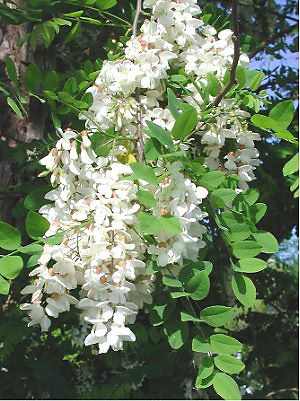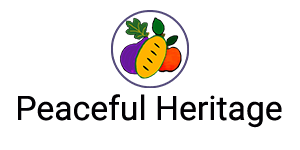Black Locust Legume Tree | Peaceful Heritage Nursery
Black Locust Legume Tree | Peaceful Heritage Nursery
Couldn't load pickup availability

Alert me if this item is restocked.
We often restock popular items or they may be returned by the other customers. If you would like to be notified when this happens just enter your details below.
Black Locust Legume Tree | Peaceful Heritage Nursery
We respect your privacy and don't share your email with anybody.
Alert me if this item is restocked
We have cancelled your request.
An excellent, native, honeybee forage species as well as nitrogen-fixing tree. Edible blossoms taste sweet and delicious.Makes one of the best rot-resistant lumbers known to man. Fast growing and establishes easy but must be planted in full sun, or nearly all-day sun. Stunningly beautiful and very fragrant EDIBLE blooms begin in only about 2-3 years from planting. Bees absolutely love it! Considered one of the very best bee forage species, and considered to produce one of the best honeys in the world. In our experience, the thick black locust honey turns out almost clear/ white and tastes like almond-vanilla ice cream. To say it is delicious is an understatement. Honeybees have been known to make entire crops off these trees alone. Field grown from Kentucky-grown seed.
You can plant black locust as a productive, useful wind break, timber species, bee forage or all three. Makes the land more fertile and healthy. Blooms around May-June. Some permaculture growers intersperse species like black locust or honey locust throughout their orchard for natural and sustainable soil fertility. Nut trees grow much faster when interplanted with nitrogen-fixing shrubs or trees such as Black Locust. Makes excellent firewood as well, very high in BTU's and long-burning. We've observed small logs burn hot for about 8-10 hours! Every farm and homestead should have some black locust trees on it. Small thorns when young, disappearing when older. Expect these trees to get around 2-4 ft tall the first season, 6-8' by year 2 and blooming by year 3 or 4. Field Grown. Photos courtesy of Wikipedia.com
Recommended for Organic Growing
Disease and trouble free species.
Native USA Tree.
Uses: Windbreak, nitrogen production, edible blooms, excellent honey plant, excellent rot-resistant lumber, excellent firewood. Edible, delicious blooms. Ideal honey tree.
Sun Exposure: Full sun to mostly full sun ONLY. Will not succeed in partial shade.
Plant Size: 1-YR, Approximately 1' Tall Bare-Root seedlings
Conventionally Grown
Share



